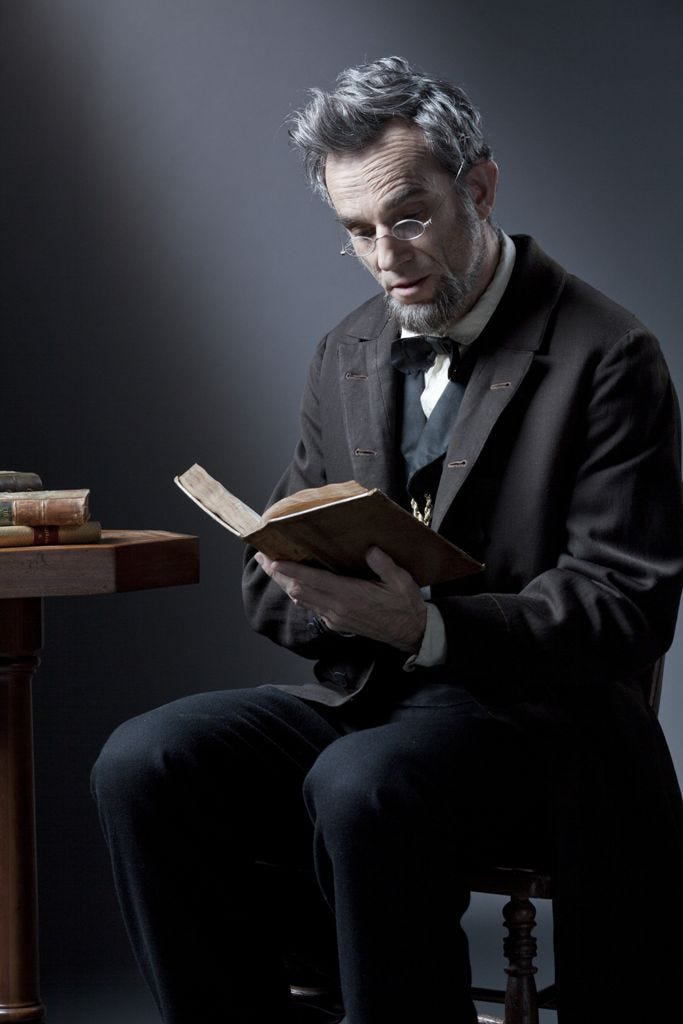When Ridley Scott decided to make Gladiator, he wanted to make it as realistic as possible. There was only one problem: the reality of Ancient Roman life didn’t reflect our common beliefs. In fact, that time and place wasn’t too different from our own. For example, ads and graffiti were everywhere.
Imagine Russell Crowe’s Maximus walking past fresco billboards promoting olive oil or walls completely covered in crude drawings and text. Even though it’s true, it creates a cognitive dissonance around time, an anachronism called the Tiffany Problem.
The term was coined by writer Jo Walton because even though the name Tiffany has been around at least since the Holy Roman Empress, an audience would never be able to accept that name in historical fiction depicting that era. It would feel like watching Daniel Day-Lewis in Lincoln read the Gettysburg Address off an iPad.
Now, imagine you’re watching a George Washington biopic. Jeff Daniels has the starring role, probably. Newly elected President, George moves to Philadelphia, then capital of the country—where he’s faced an immediate problem: According to Pennsylvania’s anti-slavery law, he’s got six months to free the people he’s enslaved.
George is a Southern aristocrat. Enslaved people have been doing everything for him since birth and he literally can’t imagine life without them. So, he concocts a plan to circumvent the law and continue enslaving. Of course, this plan must be kept secret from the people he’s enslaved as well as the voters. We learn this from a letter to his personal secretary in which we hear George/Jeff’s voiceover, “I wish to have it accomplished under pretext that may deceive both them and the Public.”
This scene is so mixed up it seems silly. Everyone knows George was famously good and fundamentally honest. We all know slavery was widely accepted by the public during colonial times and racism didn’t even exist until the Civil War! Plus, not for nothing, but George would have to be Trump-level stupid to so openly document his own conspiracy, right?
Right?
In fact, slavery was such an abhorrent practice during colonial times that Pennsylvania had a functioning gradual abolition law on the books nearly a decade before George became President. Yes, George was a spoiled aristocrat. Yes, his plan was real, the conspiracy was real and yes, the quote and the letter revealing all are also real. But a scene depicting any of that would be unacceptable because the truth requires not only disregarding our beliefs about our our past, but also our present and maybe even our future.
I think we can all agree that it would be nice if our leaders only recently became wealthy unscrupulous doofuses who disregard the law and destroy peoples’ lives for their own personal gain. Unfortunately, this place wasn’t really designed for us all to agree.
So, on this Independence Day, in the name of creating a better world, free yourself of the Tiffany Problem! Forget everything you think you know and allow yourself to be reintroduced to these United States by the beautiful voice of Ossie Davis reading Frederick Douglass’ “What to the Slave is the Fourth of July?”
https://www.jstor.org/stable/4387300?seq=2
https://www.torforgeblog.com/2019/05/21/putting-the-historical-in-the-historical-fantasy/







Sam! Thanks again for putting a name to the (we can’t show that-syndrome) that I would sometimes run into while illustrating books. The Tiffany Problem.
Sounds like a PowerPuffGirls super nemesis. I like it.